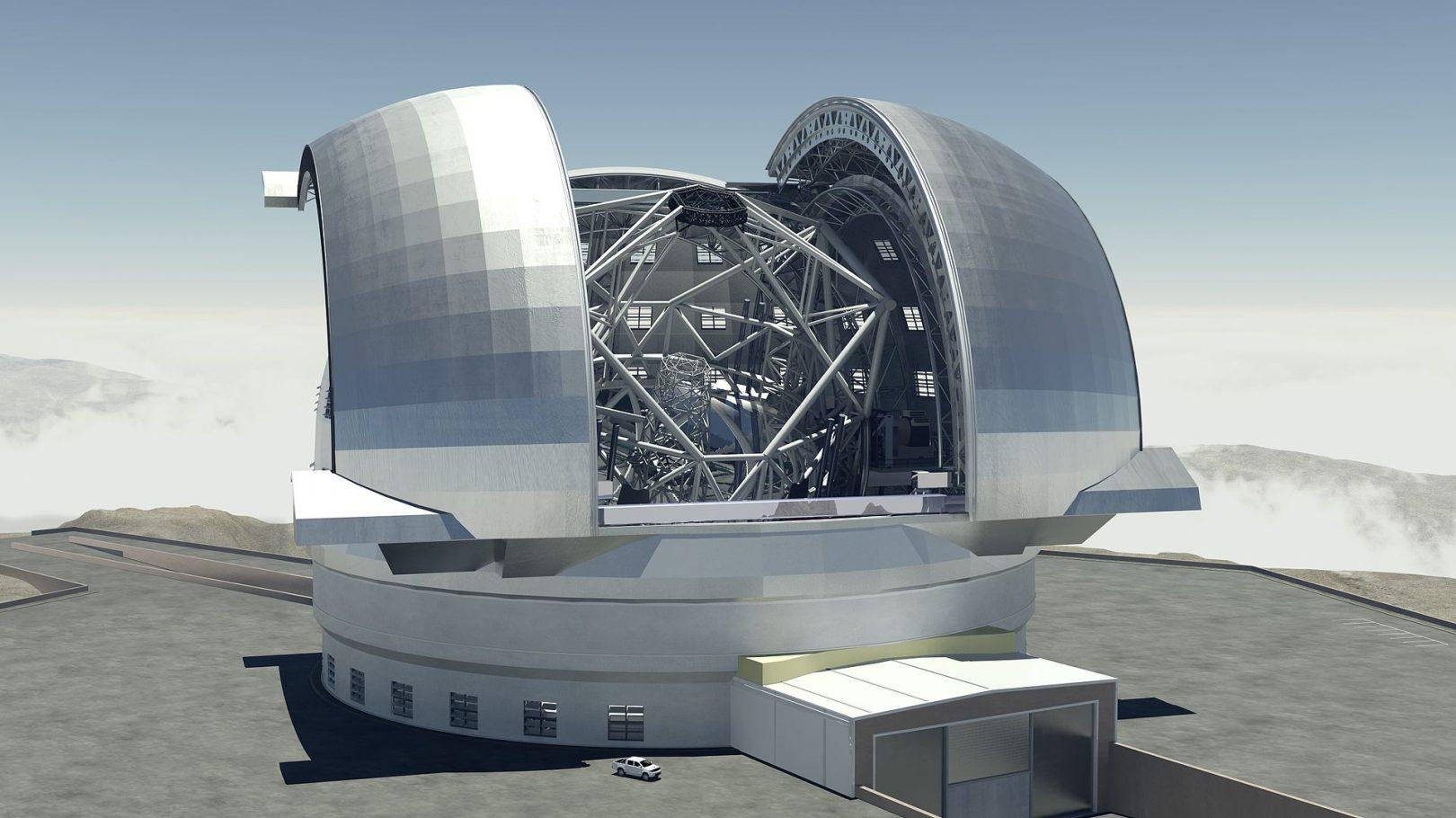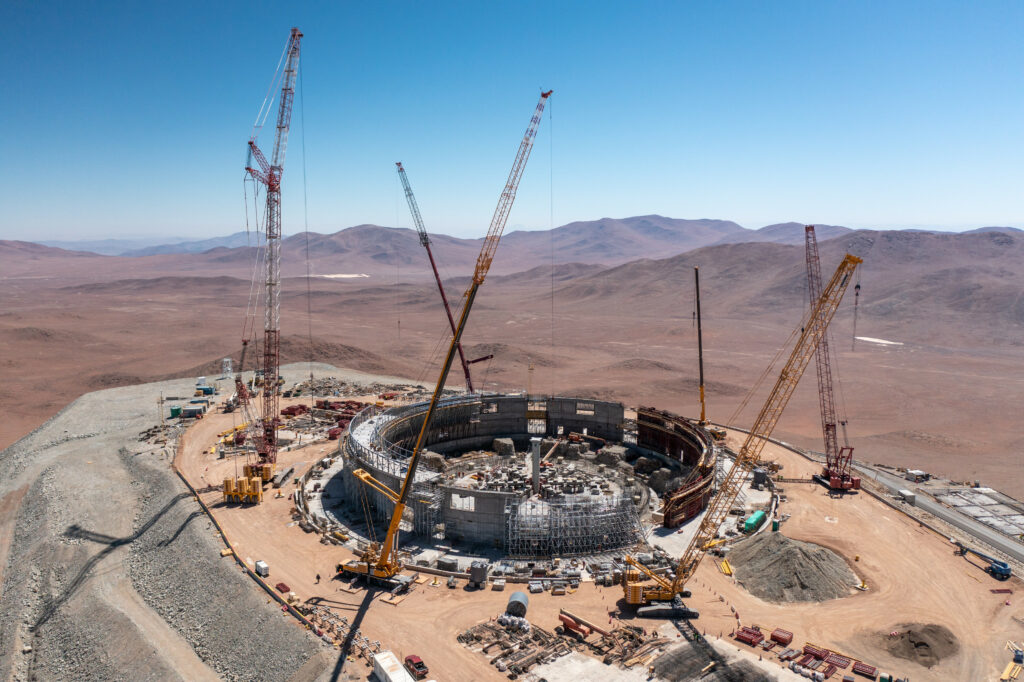The European Southern Observatory has published a new image taken at the top of the Chilean Cerro Armazones Mountains. It demonstrates the progress made in the construction of the Extremely Large Telescope (ELT).
The largest telescope in the world
ELT will become the largest ground-based observatory conducting research in the optical range. Its central component is a huge rotating dome 80 meters high and weighing 6,100 tons. The diameter of the dome room will be 88 meters, which is comparable to the area of a football field.

Inside the dome will be placed a 39-meter main mirror consisting of 798 individual hexagonal segments with a total area of 978 m² and a weight of 132 tons. It will be controlled in real time by a system of high-precision sensors providing constant optical alignment. Thanks to this, the observatory will be able to collect 15 times more light than the largest operating optical telescopes.
The design of the ELT also provides for the use of a fundamentally new adaptive optical technology, which is capable of maximally correcting the distortion of images of celestial bodies introduced by the Earth’s atmosphere. It is expected that the new observatory will directly photograph exoplanets, study their atmospheres, observe the birth of new planetary systems, and also help measure the acceleration of the expansion of the Universe.
Construction of the ELT dome
As the new image demonstrates, the construction of the concrete structure of the ELT is almost complete. It will sustain the steel dome. In the coming weeks, the installation of 36 mechanisms will begin, which will subsequently ensure the rotation of the dome weighing 6,100 tons by 360 degrees.

In the rightmost part of the image, the foundation of the cooling unit is clearly visible — one of many auxiliary devices designed to keep the telescope’s temperature low during the day so that by night it has the same temperature as the environment. This is a key condition for minimizing air turbulence in the dome room and thermal deformations of the telescope. In the center of the image is the main foundation of the central building, in which the telescope and all its instruments will be placed under the dome, with a total weight of 4,600 tons. It took almost 9,000 cubic meters of concrete to lay this foundation, inside which ultra-modern anti-seismic devices already were installed.
Several cranes with a lifting capacity from 250 to 600 tons are already operating at the construction site, with the help of which concrete structures are being built. In particular, the crane that we see on the left will be required to assemble both the dome and the main building. This crane with a height of almost 120 meters and an arrow length of up to 80 meters is visible for several kilometers. Looking at it, you can imagine how huge the ELT tower itself will be.
The total cost of the ELT project is estimated at 1.2 billion euros. According to current plans, the telescope will see its “first light” in 2027.
Follow us on Twitter to get the most interesting space news in time
https://twitter.com/ust_magazine

